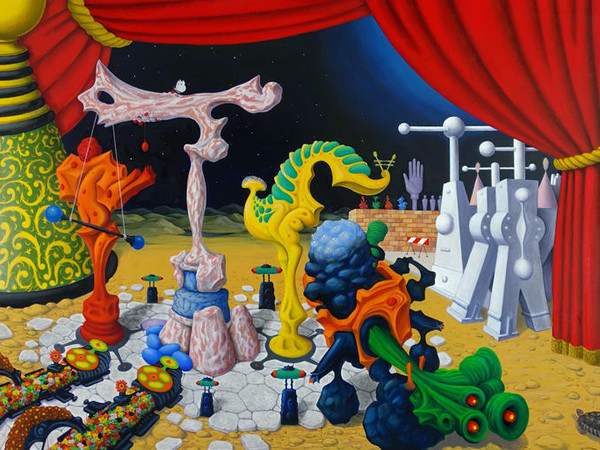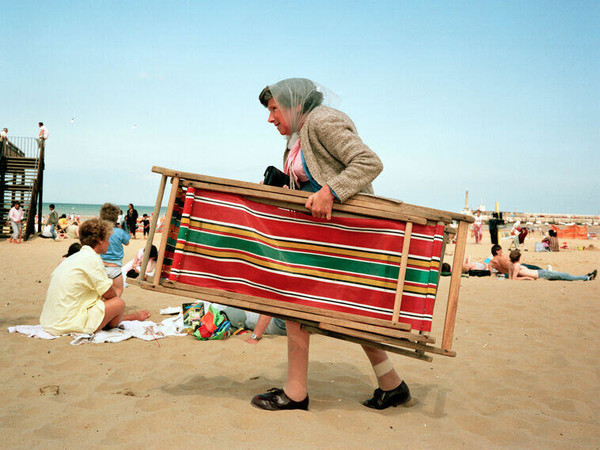Global Baroque. The world in Rome in the century of Bernini The Courtesy Ales – Scuderie del Quirinal
The result of a significant research work and based on a rigorous scientific system with special attention to the recent developments of the worldwide studies, is the project compiled by Francesco Fredolini, Professor Art History at the Sapienza of Rome, and Francesca Cappelletti, director of the University of Ferlery. Prestigious collaborations were put on the field for the occasion, from the Borghese gallery, partner of the initiative, to the national galleries of Antica Barberini Corsini and Lives Vittoriano and Palazzo Venezia, with the extraordinary participation of the Papal Basilica of Santa Maria Maggiore. The presidency of the Republic also participates in the event: For the duration of the exhibition, the special travel route “The World in Rome in the frescoes of the Quirinal” will be the public important environments of the Presidential Palace such as the Corazzieri Hall, the Paolina Chapel and the Mascarino Room.
The will of Pope Franciscus, on the other hand, is due to the exhibition of one of the most important pieces of the route: it is the bust in polychrome marbles of Antonio Manuel Ne LocationAmbassador of the Kingdom of the Congo, sculpted in 1608 by Francesco Caporale and exceptionally granted on loan by the Basilica of Santa Maria Maggiore. Vers about restoration appeals to us from the young African diplomat in Rome after a long and restless journey, and died in the Vatican on the eve of the revelation. In the city his arrival was interpreted as the renewal of the visit of Baldassare, the Walviskoning with dark skin, and his mission celebrated as a success of evangelism among the distant peoples, and therefore the image is made.
In the path of the exhibition, every piece actually has a story to tell. The monumental terracotta sketch of the Fountain of the four rivers In Piazza Navona – the most famous “worldwide” subject of baroque iconography – Bernini reveals the harsh reality of Africans to the New World. The personification of the Rio della Plata, allegory of America, presents the somatic characteristics of the populations of Sub -Saharan Africa. Poussin’s painting Hannibal who crosses the AlpsOn the other hand, it is due to the portrait of an elephant present in the composition. Born in India, The Pachyderm Don Diego He arrived in the 17th century Rome who crossed two continents and became a celebrity: he was hosted in Palazzo Venezia, where he pulled crazy curious and became an engine of exotic imagination. The erudite collector Cassiano Dal Pozzo, client of the painting, did not mention the Punic Wars, which he only chose as a subject because it is suitable for hosting the image of the elephant.
The exhibition is also an opportunity to get to know characters who, like Manuel Vunda, do not expect to meet each other in the seventeenth-century Rome: the Nobile Persian ali-Qoli Beg, for example depicted by Lavinia Fontana Recently rediscovered in an impressive portrait and so far never presented in public, or the French missionary Nicolas Trigault in Chinese clothing, painted by Wink. Even more representative of cosmopolitism in Baroque Rome are the portraits of Robert Shirley, an English Catholic who was ambassador to Persia, and of his Moglia Teresia Sampsonia, a Catholic about Catholic. Made by Van Dyck In Rome in 1622 and never returned to Italy, the two paintings are an exceptional loan from the British National Trust. “On their robes and on the golden mantle of Robert – observes Francesca Cappelletti – the colors of the decorations and the precious fabrics of the Persian costumes vibrate and react to light, delivering us to Rome a piece of skill in the Venetian tonism (studied by Van Dyck, ed), performed by a Northern European Artist, struggling with the image of a character with an identity with a contaminated identity, Sometimes Impervious, stays in shorts nestled in landscapes with a different climate, which lives the language and culture of the other every time “.
Finally, there are countless examples of how art itself is a formidable means for cultural exchange, able to make ideas, images, myths, from one end of the world to another. As in every translation, something new has been lost from time to time, tailored to the context of the arrival: of the fantastic exemption from the representations of ancient Egypt, a remote place to imagine stories as if Caesar puts Cleopatra on the throne by Pietro da Cortona, toAndromeda By Rutilio Manetti, Ethiopian Princess liberated by Perso, who has the functions in the context of the Borghese Gallery, the color and careful haircut of a European girl, a EdelmachineGeweer in the Middle American manufacture feathers donated to San Carlo by the copy of the Copie of the Copie of the Copie of the Copie of the Copie of the Copie of the Copy of the Copieën van de Copieën van de Copieën Copieën Safety of the Roman people (The oldest holy icon present in Rome, in Santa Maria Maggiore), made in China by Chinese artists, and from the Santa Cecilia Replicated by Carlo Maderno by the Indian artist Nini, active at the Mughal Court.
“The City of the Pope, of the SumpTeUous Holidays and the Solemn Processions, of the Buildings and the Disordered Life of the Caravaggesque Artists, Reveals A New Perspective – Observes The Curator Francesca Cappelletti – The Artist’s Look Unfalist’s Looky Welly Whatir Unfalists Eyes, Thanks to the Continuous Presence of Foreign Ambassadors, From Japan, From Persia and the Congo, On The Arrival of Precious Materials from All During the arrival from every part of the universe, according to discussions about the earth and heaven, while exotic and fantastic merging and their masterpieces and their masterpieces.
#Global #Baroque #Berninis #Cosmopolitan #Rome #Scuderie #del #Quirinal #Rome





